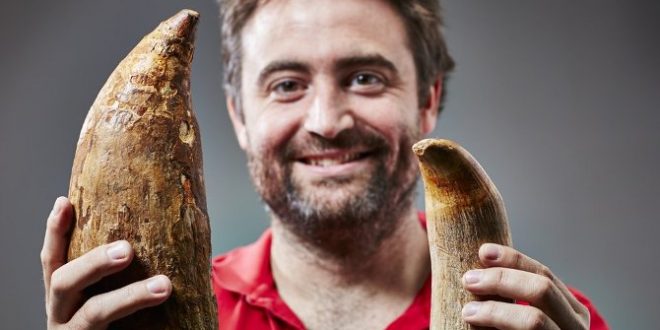An Australian fossil enthusiast discovered a giant tooth of an ancient sperm whale that used to roam the seas five million years ago, munching up fish and even other whales.
Murray Orr discovered the tooth at a beach at Beaumaris Bay near Melbourne, known for its vast trove of fossils. Orr immediately donated the fossil to Museum Victoria for further study.
The massive tooth is believed to belong to an extinct species of “killer sperm whale” that cruised the world’s oceans during the Pliocene epoch, some five million years ago. This aquatic giant, closely related to Livyatan melvillei from Peru, reached lengths of 18 metres (59 feet) and weighed 40,000 kilograms (88,000 pounds).
While modern sperm whales live on a diet of squid and fish, it’s thought that these ancient behemoths would have used their impressive teeth to feast on smaller whale species.
The tooth is the only one of its kind ever to be discovered outside of the Americas, and was brought to Museum Victoria, where scientists like Dr Erich Fitzgerald, the Senior Curator of Vertebrate Palaeontology, are hard at work analysing the specimen. Even a single fossil tooth like this can offer important clues for researchers who are decoding the past.
“If we only had today’s deep-diving, squid-sucking sperm whales to go on, we could not predict that just five million years ago there were giant predatory sperm whales with immense teeth that hunted other whales,” says Fitzgerald. “The fossil record reveals the living species to in fact be the exception to the rule, the oddball of the sperm whale family.”
Fitzgerald adds that we can expect to see more exciting finds coming from Beaumaris Bay, as the site’s rocks are of unique makeup and age. “Nowhere else on this continent produces the fossils being found at Beaumaris and provides such astonishing insights into the deep history of Australia’s marine megafauna.”
We suspect that parting with his amazing find was a little tough for Orr, but by donating it to the museum he has ensured it will be enjoyed by curious visitors for generations to come.
Agencies/Canadajournal
 Canada Journal – News of the World Articles and videos to bring you the biggest Canadian news stories from across the country every day
Canada Journal – News of the World Articles and videos to bring you the biggest Canadian news stories from across the country every day



